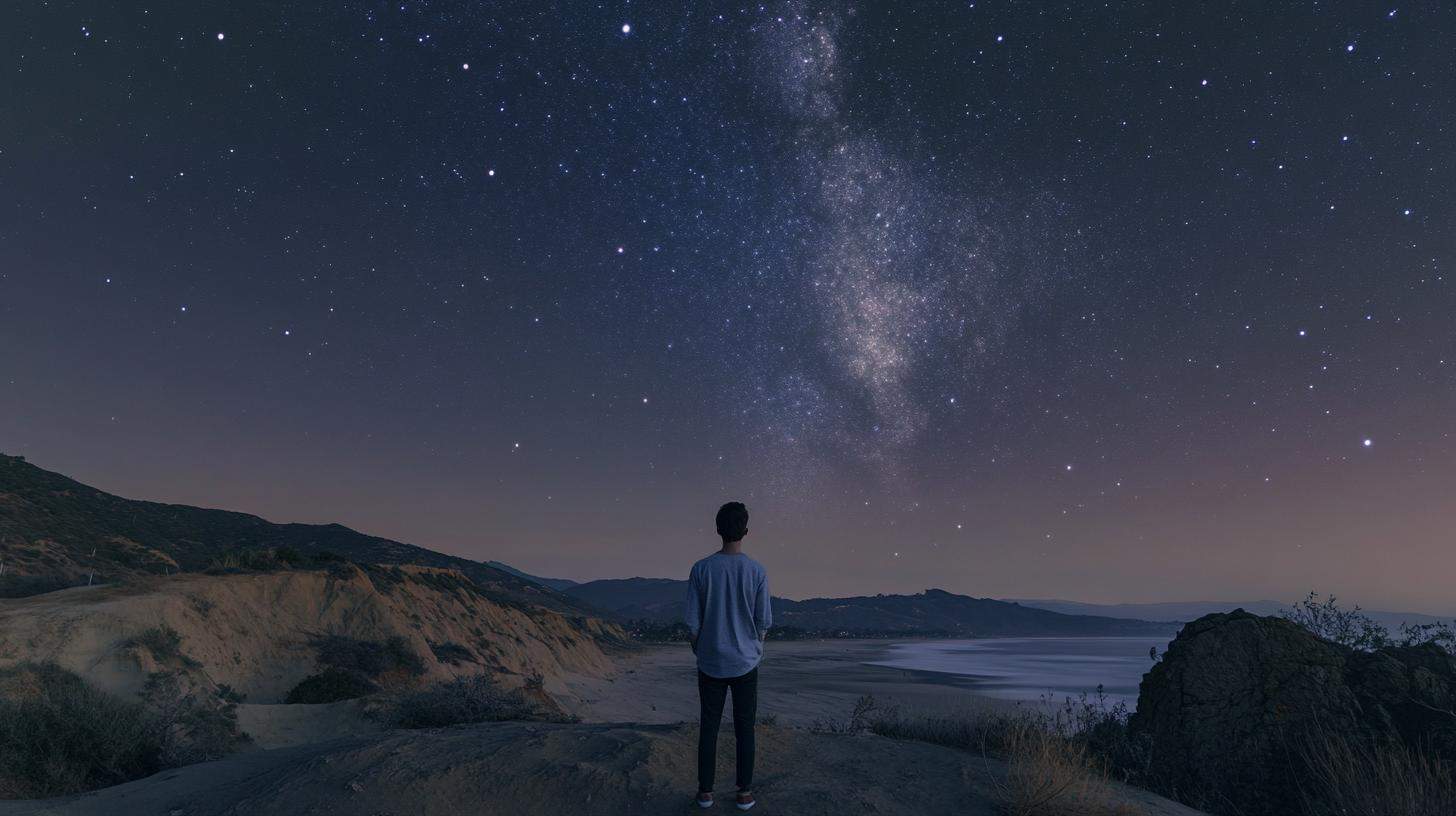In the ever-evolving world of smartphone technology, capturing stunning photographs of the night sky has been a significant draw for aspiring astrophotographers and tech enthusiasts alike. Google has consistently led the charge in pushing the boundaries of mobile photography, and with the release of the Google Pixel 8 Pro, the company is once again setting a new standard, particularly in the realm of astrophotography.
The Google Pixel series has long been celebrated for its exceptional camera capabilities, distinguishing itself particularly with its innovative approaches to low-light photography. The Pixel 8 Pro continues this tradition with a suite of features designed to enhance the capability of shooting in challenging, star-lit environments. Specifically, the phone reintroduces and refines Google’s night-sky photography mode, aptly named Astrophotography, which debuted with the Pixel 4.
Astrophotography Mode: An Evolution
The Astrophotography mode introduced back with the Pixel 4 was revolutionary, allowing users to capture impressive images of the night sky without the need for professional equipment. Building on the legacy of its predecessors, the Pixel 8 Pro incorporates cutting-edge algorithms powered by Google’s advanced AI capabilities to further refine this mode. The phone utilizes a combination of longer exposure times and intelligent noise reduction to create crisp photos that highlight celestial bodies with remarkable clarity and detail.
Hardware Meets Software
The synergy between hardware and software is a highlight of the Pixel 8 Pro’s camera system. The phone features an upgraded sensor that captures more light with greater efficiency. Additionally, improvements in processor capabilities and AI integration allow for real-time image processing, enhancing the ability to render high-quality starscapes. Furthermore, the device’s ultra-wide camera plays a critical role in capturing expansive views of the night sky, offering users the flexibility to frame shots that cover larger celestial fields.
User-Friendly Enhancements
Google has also focused on making astrophotography more accessible to casual users. With the Pixel 8 Pro, the interface guides users with instructions for optimal shooting conditions, such as recommending a tripod or a stable surface to place the phone on. The intuitive AI within the device automatically detects when the camera is pointed at the sky and suggests enabling Astrophotography mode, ensuring even novice photographers can easily capture stunning night sky images.
A Community of Enthusiasts
Beyond its technical capabilities, the Pixel 8 Pro also fosters a community around astrophotography. Google encourages users to share their photos through channels where enthusiasts can experience and learn from each other’s experiments and results. This community-driven sharing not only inspires new photographers but also showcases the potential of smartphone astrophotography in capturing awe-inspiring images.
In conclusion, the Google Pixel 8 Pro continues to push the boundaries of what is possible with smartphone cameras. By enhancing its astrophotography capabilities, Google makes it easier than ever for users to turn their attention skyward and capture the beauty of the night in unparalleled detail. With this release, Google reaffirms its commitment to innovation in mobile photography, setting a new benchmark for competitors in the industry.
Capture the Cosmos: Tips and Tricks for Smartphone Astrophotography with the Google Pixel 8 Pro
The expanding universe of smartphone astrophotography has made the stars more accessible than ever. With the Google Pixel 8 Pro at your fingertips, you can explore the night sky and capture its beauty with ease. In this guide, we’ll provide you with some essential tips, clever life hacks, and fascinating trivia to help you take stunning celestial photographs. Whether you’re a seasoned stargazer or a novice astrophotographer, these insights will elevate your nighttime photography game.
Tip 1: Use a Tripod for Stability
While the Pixel 8 Pro’s Astrophotography mode is advanced, stability remains crucial. Using a tripod or a stable surface reduces shake, allowing the phone’s algorithms to work their magic and produce clear, crisp images. A steady setup ensures you make the most of the phone’s long-exposure capabilities.
Life Hack: DIY Stability Solutions
If you don’t have a tripod, improvise with household items. A stack of books or a sturdy cardboard box can substitute effectively. Pair this setup with a self-timer to prevent movement when pressing the shutter button.
Tip 2: Choose the Right Location
To capture breathtaking images, find a spot with minimal light pollution. Urban settings might introduce unwanted glare and light interference, so head to darker areas like parks or rural locales for cleaner, more striking shots.
Interesting Fact: The Bortle Scale
Did you know there’s a scale to rate light pollution? The Bortle Scale ranges from 1 (perfect darkness) to 9 (bright inner-city sky). Aim for a site rated between 1 and 3 for optimal astrophotography conditions.
Tip 3: Utilize AI Suggestions
The Pixel 8 Pro is designed to guide you. When it suggests switching to Astrophotography mode, follow its tips for optimal angles and framing. Pay attention to the instructional prompts about exposure and stability.
Life Hack: Experiment with Manual Control
While AI is fantastic, experimenting with manual settings can give your photos a personal touch. Adjust the white balance, ISO settings, and focus manually to see how it affects your shots.
Interesting Fact: Beyond Our Pale Blue Dot
Astrophotography not only captures stars but can also glimpse other celestial bodies, such as planets and the Moon. Identifying Mars or Jupiter in your photos can add a sense of scale and wonder.
Build Your Community
Join online forums and groups where Pixel 8 Pro users and astronomy enthusiasts share tips and their best shots. Learning from others’ experiences and techniques can inspire your own photography journey.
Conclusion
With the innovations of the Google Pixel 8 Pro, astrophotography has never been more approachable. By incorporating these tips and tricks into your shooting routine, you can take your stargazing further and capture mesmerizing snapshots of the universe.
For more information, updates, and tips from Google, visit the official Google website.
The article has been updated: 2024-11-02 03:04
Here are some suggested related links for your post titled “Google Pixel 8 Pro Reintroduces Enhanced Astrophotography”:
1. Google – The official website of Google, where you can find more information about the Pixel 8 Pro and its features.
2. TechCrunch – A leading technology news site that often covers new device announcements and reviews.
3. CNET – A trusted source for reviews and news on technology, including smartphones and their photography capabilities.
4. The Verge – A comprehensive technology and culture website that frequently discusses the latest in mobile photography advancements.
5. DPReview – A renowned site dedicated to photography, offering insights and reviews on camera technology, including smartphone cameras.
6. Android Authority – A go-to resource for news and reviews specifically focused on Android devices, including in-depth coverage of Pixel smartphones.
7. Engadget – A multimedia source of technology news and reviews that often highlights new tech features in smartphones.
8. PCMag – A prominent technology publication that provides expert advice on the latest gadgets, including smartphones with advanced photography features.
These links will help enhance your post’s content by providing readers with additional resources related to the Pixel 8 Pro and its astrophotography capabilities.
The article has been updated: 2024-11-03 12:12
What new features does the Google Pixel 8 Pro offer for astrophotography enthusiasts?
The Google Pixel 8 Pro reintroduces enhanced astrophotography capabilities by incorporating advanced computational photography techniques and improved camera hardware. It features a new astrophotography mode that allows users to capture stunning details of the night sky, including stars, planets, and even the Milky Way. Additionally, the camera software has been optimized for better noise reduction and improved light sensitivity, making it easier to shoot in low-light environments. The integration of AI allows for real-time processing that enhances image quality, enabling both novice and experienced photographers to achieve professional-grade astrophotography results.







